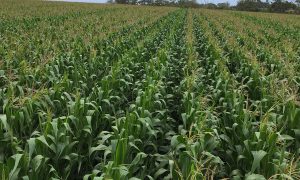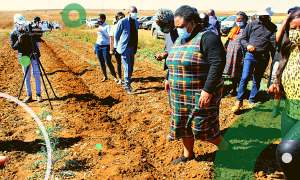Dairy
“The FAO Food Price Index* (FFPI) averaged 97.9 points in September 2020, up 2.0 points (2.1 percent) from August and now 4.6 points (5.0 percent) higher than its value a year ago. The September value, the highest since February 2020, represented the fourth consecutive monthly increase. For the first eight months of 2020, 0.63% less unprocessed milk was purchased compared to the same period in 2019, while milk purchases is on the same level if compared to 2018 over the same period” – Bertus van Heerden, project manager, Milk SA.
Maize
“Between May and last week, Zimbabwe imported 192 366 tonnes of South African maize (both white and yellow). South Africa’s maize exports could remain thin in the coming weeks as Zimbabwe still relies on its domestic harvest. But there will likely be some momentum at the end of the year and into 2021. This is when Zimbabwe’s maize stocks will likely be depleted or at low levels. This is also the time when there will likely be reports about cases of rising hunger, which the World Food Programme has been consistently warning about” – Wandile Sihlobo, chief economist, AgBiz
Cape Wools
“Port Elizabeth – A total of 7 642 bales were offered on the 9th sale of the 2020/21 wool season, after 1 135 bales were withdrawn before the sale, with a sales clearance of 93,9% of the bales actually offered. The wool market surged upwards by 8,6% (ZAR) to close on R146,32 p/kg, with very good competition experienced for the good quality merino wools on offer, especially for the certified sustainable wools. The good quality long fleece wools also outperformed the market this week and sold at a large premium compared to the shorter length merino wools.
The market followed the upward trend in the Australian market this week, which improved by 9,3% (AU$). The SA Rand traded 0,6 % stronger against the US$, showing positive returns of 9,2% in US$ terms, with better market sentiment driving all micron categories upward” – Cape Wools SA.
Beef
“After trading in negative territory in the recent past, the yearly trend shows a rebound relative to last year for most categories except for class A carcass which is still 17% below the 2019 levels. Cattle slaughter slowed from the recent advances in the four months prior to August 2020, coming in down 8% for both m/m and y/y at 205,338 head. This brought the cumulative year to date (YTD) cattle slaughter to 2.6 million head which is however 2.1% lower y/y” – Paul Makube, senior agricultural economist, FNB.




















